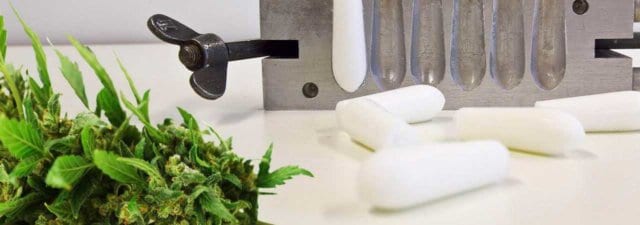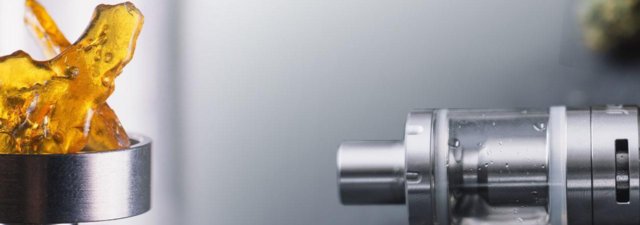Cannabidiol (CBD) has a wide range of applications and consumption methods. If you’ve been thinking about trying CBD oil and don’t know where to start – or if you’re used to the world of CBD but want to try something different – this article is for you.
The ‘Best Way to Take CBD Oil’? The Answer is Different for Everyone…
People take CBD oil for a variety of reasons. As a naturally occurring cannabinoid, the compound has many purported health benefits – but this doesn’t mean that CBD’s effects will be the same for everyone.
CBD acts on a complex network of receptors in the body’s endocannabinoid system (ECS), which regulates and maintains various processes relating to homeostasis. Depending on what exactly a person is using CBD for, different types of products may be more or less effective due to the specific way in which the product interacts with ECS receptors.
Simply put, for those curious about the best way to use CBD oil, there is no specific answer applicable for everyone.
Below, we outline several different product types and highlight the most appropriate uses for each.
1. Sublingual oils
“Old but gold,” sublingual CBD oils are considered the classic option by many. They’re effective, they’re relatively fast-acting, and they’re easy to use. All you need to do is place a few drops beneath your tongue and hold the liquid there for around 90 seconds before swallowing.
The drawback is that CBD oil is not regulated, and there are many products out there that you need to be wary of. For the best results, look for a product that has been organically sourced and made via CO2 extraction.
Pros:
- Convenient and very easy to take
- Widely accessible and many flavors/options to choose from
- Fast-acting due to sublingual absorption
- Commonly used for stress, anxiety, and pain relief
Cons:
- Some users complain about the taste, which can be earthy and strong (unless extra flavoring has been added)
2. CBD Capsules
If you’re among those that lament the taste of CBD oil, CBD capsules are an excellent alternative. These consist of CBD oil enclosed inside a gelatin capsule, similar to many other medicinal supplements. CBD capsules are popular among elderly individuals for this exact reason, as they so closely resemble traditional medicines.
One problem with capsules is that, as of yet, they aren’t available in as many strengths as their oil counterparts. However, this is likely to change as they expand in popularity.
Pros:
- Extremely easy to add to a daily routine: Swallow one capsule whole with a drink of water
- Capsules are pre-dosed, making them convenient and straightforward to use
- Capsules are tasteless, which many CBD users prefer
- Commonly used for mild pain, stress, and trouble sleeping
Cons:
- Dosing can’t be altered/adjusted as easily as with other products
3. Concentrates (Dabs, Waxes, etc.)
Concentrated CBD extracts include products like powdered isolates, shatters, and waxes. These often pack a considerable punch in terms of potency. It is why people commonly use them for relief from pain and/or anxiety. Concentrates are also versatile and can be used with vape devices and incorporated into various foods and beverages.
Concentrates can also be very tasty, particularly when infused with natural terpenes from real cannabis strains. Some people prefer to dab concentrates, which is a process wherein the CBD is instantaneously vaporized and the user receives a massive dose in one single inhale.
Pros:
- Concentrates can provide extremely potent and fast-acting effects
- Added terpenes in some concentrates mean that the CBD can come in a variety of flavors
- Most (but not all) CBD concentrates are made from isolate, meaning they are 100% THC-free
- Concentrates can provide potent effects for pain relief, stress, and anxiety
Cons:
- Equipment (i.e., dabbing rigs) are often necessary, and these can be expensive
- Concentrates aren’t the best option for beginners, as techniques like dabbing can take a little know-how
- Measuring precise doses is not easy
4. Vaping
While there is always the option to smoke high-CBD strains of cannabis (in states where this is legal, of course), this is not the most recommended option as combustion can have nasty side effects on the lungs. On the other hand, vaping reportedly skirts around these effects because it does not involve combustion or the production of tar residue. However, lung effects with vaping are still possible, and much more research is needed to know the full effects.
Products like vape pens are becoming more popular, and many of these are made specifically for CBD oils. Vaping is also very fast-acting since the inhaled CBD is transferred to the bloodstream via gas exchange in tiny air sacs in the lungs.
Products like vape pens are becoming popular due to their potency and fast-acting effects.
There are also tons of vape products out there to choose from, which can be good or bad. Whether you would prefer a box-mod model to look flashy while vaping or whether a discreet vape pen is more your style, there is no doubt something out there for you.
There are also quite a few strength options available for vaping CBD, meaning you can start with a lower strength oil if you prefer and work your way up from there.
Pros:
- Some regard vaping as a safer alternative to smoking
- There are tons of different oils and devices to suit a variety of needs and applications
- CBD vape oils can be delicious, making for an enjoyable consumption method
- Effects are often potent and fast-acting
Cons:
- Vape pens and other vape devices can be expensive; it’s an investment
- There may be risks involved with vapor inhalation, mainly if you are using low-quality and/or untested products
- Measuring specific doses is not always easy
5. CBD Topical lotions
CBD-infused lotions and balms are the go-to option for many to help with aches and pains in the muscles and joints. Topicals are applied directly to the skin, where the CBD is absorbed into surrounding cells. These are a good option for those suffering from conditions like arthritis and muscular pain. They are becoming more popular among athletes and trainers for decreased muscular soreness and faster recovery.
Pros:
- A good option for joint and muscle pain
- Easy to apply
- A vast amount of strengths and potencies are available to choose from
Cons:
- Difficult to measure dosing
- Very use-specific (i.e., cannot be used for things like stress, anxiety, sleep issues, etc.)
- The effects are not usually as long-lasting compared to products like CBD oils
6. CBD Edibles
Edibles (for example, CBD gummies) have become a very popular method of consuming CBD. Like other products, there are advantages and disadvantages to using edibles. The biggest advantage is that they are delicious, hence the reason why so many people love them.
The major downfall of gummies is that since they have to pass through the digestive system, they’re often not as fast-acting as products like vapes or even oil tinctures.
In terms of use, many people enjoy edibles to ease stress and anxiety and improve sleep quality. A lot of products nowadays are even infused with supplementary sleep ingredients like melatonin.
Pros:
- A delicious, fun way of consuming cannabidiol
- DIY edibles can easily be made at home using standard CBD oil
- You can portion edibles into different doses/serving sizes
- A huge variety of CBD ediblesare available online to buy, meaning users have a lot of options
Cons:
- Edibles are often full of sugar and corn syrup, making them one of the most unhealthy CBD options
- Effects usually take longer to kick in, and absorption is lower
How To Take CBD Oil & Optimize Results
Taking CBD oil requires figuring out dosing, which can be time-consuming and often determined by trial and error. You need to develop a keen ability to listen to your body, as this will help you understand how CBD is interacting with your endocannabinoid system.
We recommend keeping a journal and detailing every dose of CBD that you take over at least two weeks to optimize results. Note which type of product you used, how many milligrams you consumed, and what types of effects you experienced.
Doing this will help zero in on which type of CBD works best for your specific needs. It will also help you gauge how much CBD you should be using and avoid problems related to over or under-dosing.
Can You Drink CBD Oil?
Lastly, it’s worth pointing out that more and more people are taking CBD oil in the form of a beverage. This method can be an effective means of consuming CBD, but be wary of the type of product you’re using.
Some brands are marketing products like water-soluble CBD, which purportedly contains nano-CBD molecules that can chemically dissolve in water. CBD, by nature, is lipid-soluble, meaning it has to be dissolved in a liquid that contains high amounts of monounsaturated fats.
So, if you plan on adding your CBD oil to a beverage, make sure to add it to something like tea or coffee, along with a high-fat liquid like milk, cream, or MCT oil.
Summary: The Best Way To Take CBD Oil
At the end of the day, how you take your CBD oil is entirely up to you. There are plenty of methods out there for consumption, and we hope the six mentioned above will help you get the most out of your CBD journey.
As a general starting point, we recommend trying oils first. CBD oils are easy to dose, they make a simple addition to anyone’s daily routine, and they are generally effective and can be used for a wide variety of conditions.
Oils are also available in a wide range of strengths, ideal for people just starting with CBD. Start with a low-strength product, and work your way up from there to find a dose that is most effective for you personally.





![What is Budder? [All You Need to Know]](https://wayofleaf.com/wp-content/uploads/2019/04/mj_what-is-budder_1920-640x225.jpg)





![CBD and Bodybuilding [Can It ACTUALLY Be Beneficial?]](https://wayofleaf.com/wp-content/uploads/2020/06/wol_cbd_and_bodybuilding_1920x450-640x225.jpg)
